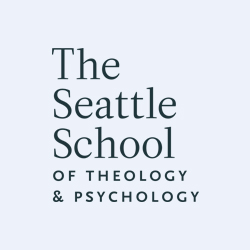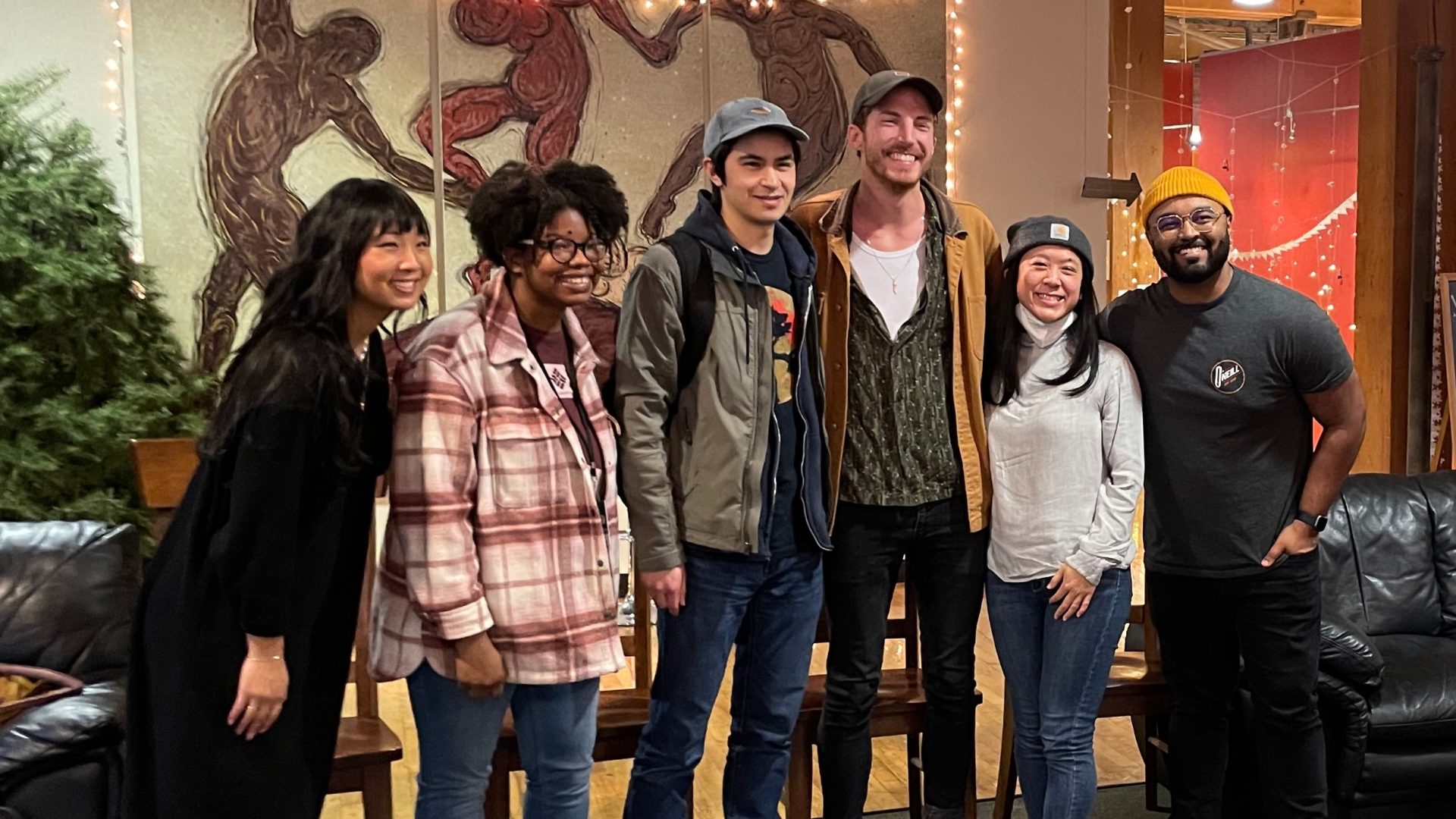The Seattle School has reserved a portion of its public space to display and honor art created by students, staff, faculty, and alumni, as well as artists from the greater Seattle area. This winter, two student groups – the BIPOC group and LIT – co-sponsored “Underrepresented Voices,” a student art gallery on the second floor in the Commons. Felicia Tran, a 5th-year MATC student, coordinated on behalf of LIT, a student group that has recently evolved from a focus on producing a literary publication into a network of students who care about creative and artistic endeavor, emphasizing the spaciousness and openness of expression. Philip Hayes, a 3rd-year MATC student, coordinated on behalf of the BIPOC group. The idea began with the BIPOC group as a student art gallery to provide a platform for greater visibility and expression, and then all underrepresented students were invited to participate, as the following statement in the gallery explained:
“As The Seattle School students who have underrepresented backgrounds and identities, we find ourselves having to navigate dynamics in our graduate education that make us feel unheard and invisible. Our opinions and experiences are often relegated as exceptions to concepts we learn, and to the way the teaching and curriculum are structured. We understand we represent various minoritized experiences, but we believe that prioritization of our intersection of identities may actually lead to more liberative learning for the entire institution and student body. This gallery was designed to send that message and counteract our educational institutional reality at The Seattle School by most literally taking up physical space with our stories, thoughts, feelings, and expressions. There’s beauty, anger, grief, joy, and hope. It’s reflective, vulnerable, gritty, and honest. This gallery is first and foremost a celebration of our presence at The Seattle School. But it is also a call to action. The goal of this gallery was simply to give a platform to underrepresented students to express whatever they would like to express. We decided on ‘Underrepresented Voices’ as our theme because it is a self-fulfilling theme. Anything the artists chose to express is amplifying an underrepresented voice in our community.”
At the reception held during winter residency, the following students spoke and shared about their work during an art walk through the gallery:
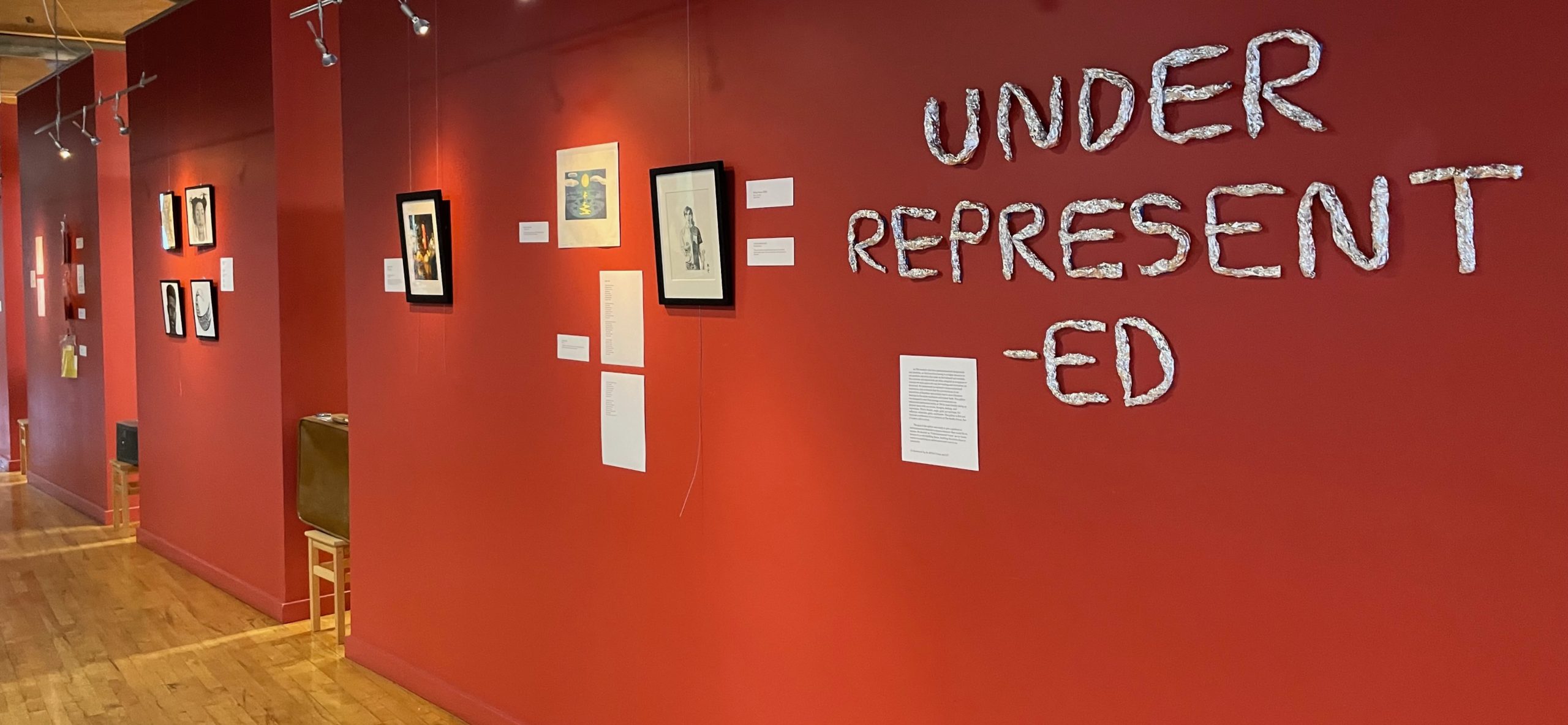
Philip Hayes MATC, 3rd Year
BIPOC Group
“Untitled Self-Portrait”
Pencil Drawing
“Moon over Ko Olina”
Woodblock Print,
“Cain and Abel”
Poem
Philip’s creative expression engages through multiple media including music, pencil, woodblock, and poetry: “These come from a very deep place for me.” In the gallery, he shared a poem written for a class taught by Dr. Angela Parker, a meditation on who we identify with in Scripture, calling for a new theological imagination for the story of Cain and Abel and other stories. From the artist’s statement for “Moon Over Ko Olina”: “This is a fictive meditation on home, which I find fitting because, for me, the idea of home has a fictive quality.” From the artist’s statement for “Untitled Self-Portrait”: “This piece holds the complexity of my experience as a biracial person and the reality of the white world that I find so often is my backdrop.”
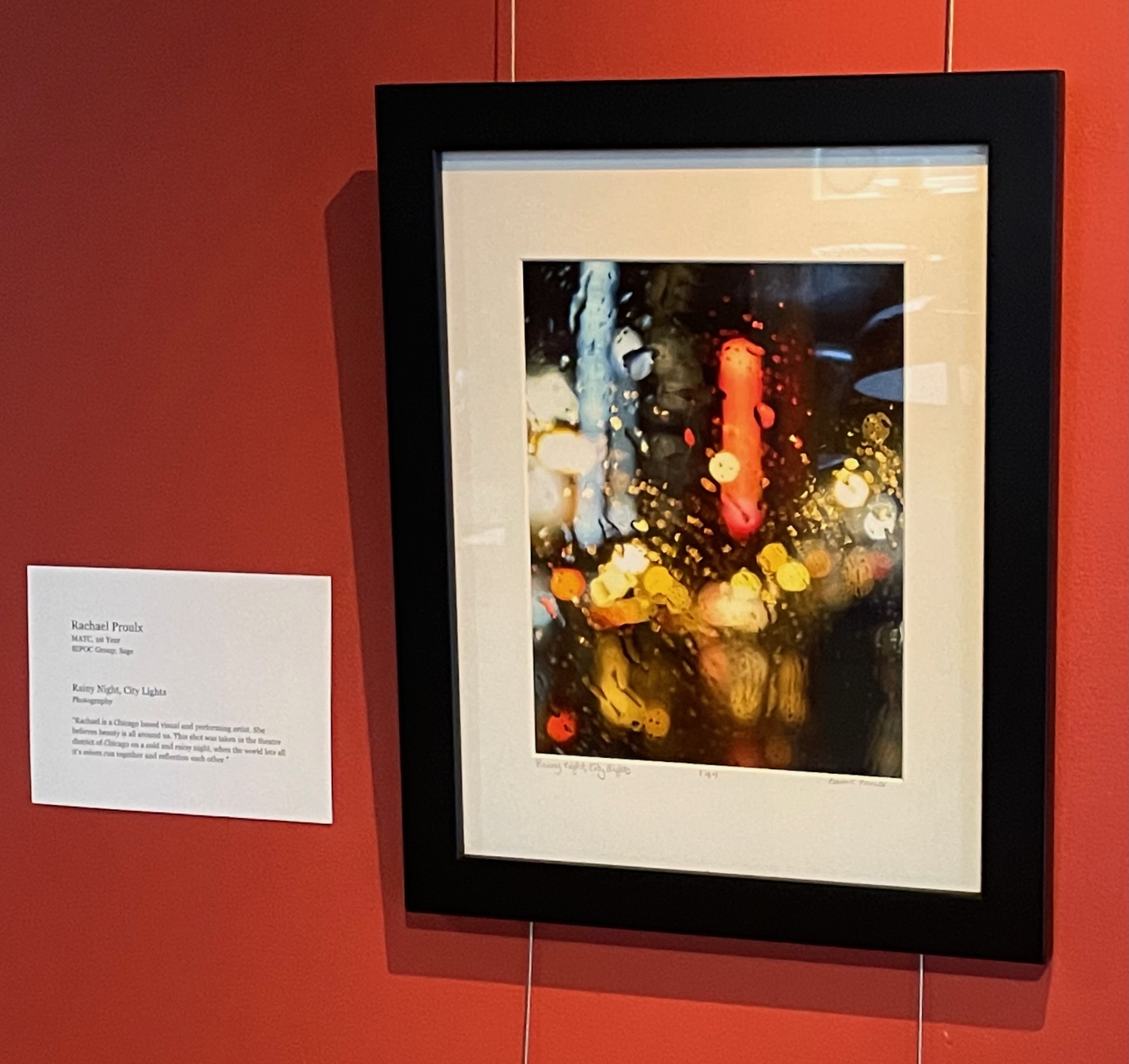 Rachael Proulx MATC, 1st Year
Rachael Proulx MATC, 1st Year
BIPOC Group, Sage
“Rainy Night, City Lights”
Photography
Rachael is a Chicago-based visual and performing artist. From the artist’s statement: “She believes beauty is all around us. This shot was taken in the theatre district of Chicago on a cold and rainy night when the world lets all its colors run together and reflect each other.” At the art walk, she described how an act of generosity shaped this work – a passerby held her umbrella for her. “The people I meet when I do [photography] is probably my favorite thing.”
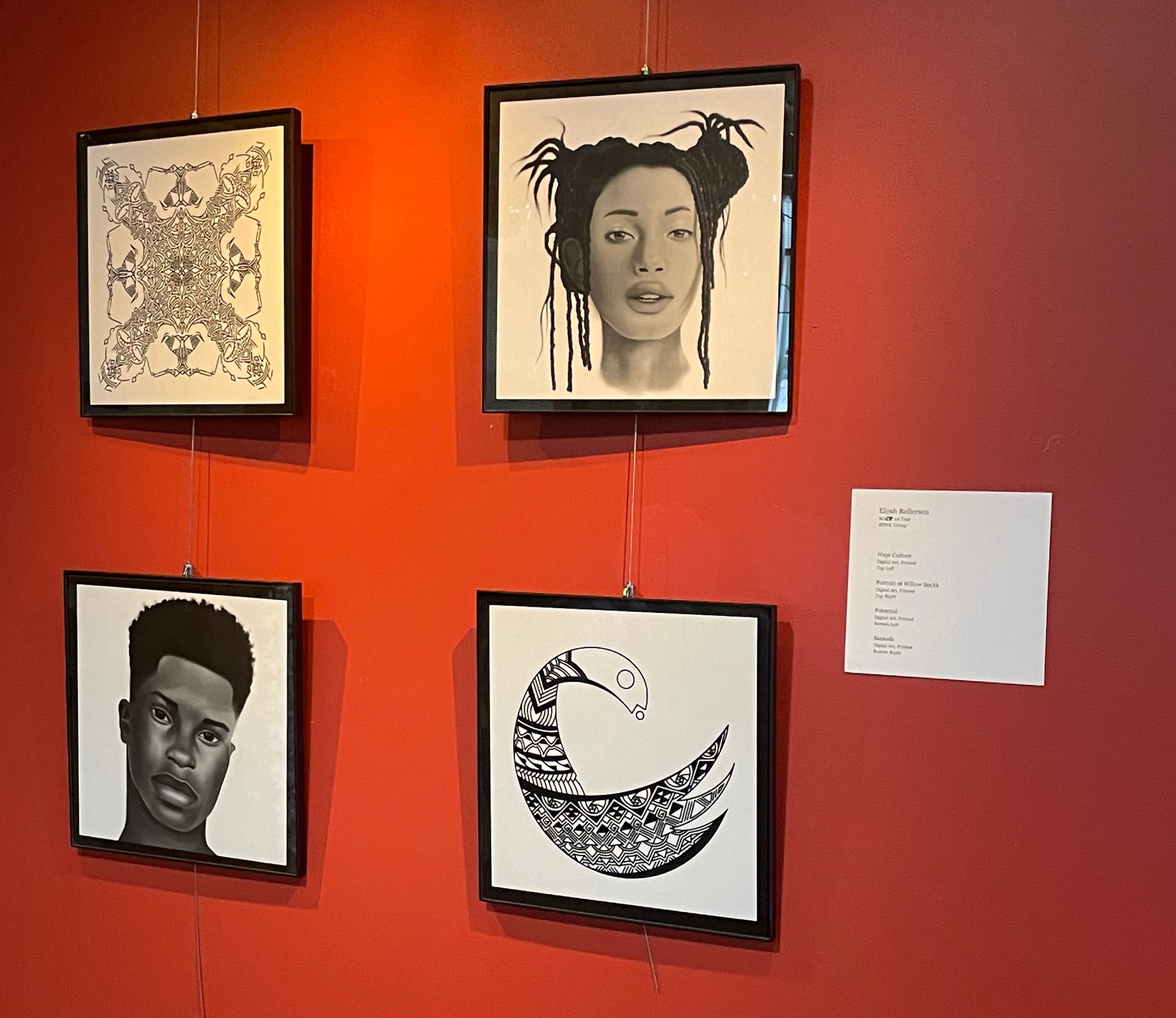 Elijah Rollerson MACP, 1st Year
Elijah Rollerson MACP, 1st Year
BIPOC Group
‘Wept Culture”, “Portrait of Willow Smith”, “Potential”, “Sankofa”
Digital Art, Printed
Elijah’s first digital art explorations into portrait realism started with models who looked like him: it was “fun to figure out how to capture darker skin through the medium”. Seeking to use traditional symbolism and iconography, his work also included a mandala, and a Sankofa from Ghana’s legend of a bird looking backward to look forwards, representing how understanding progresses through processing. In high school: “as a black man doing art that was abstract, there was no one else who looked like me who was doing what I was doing.”
Felicia Tran MATC, 5th Year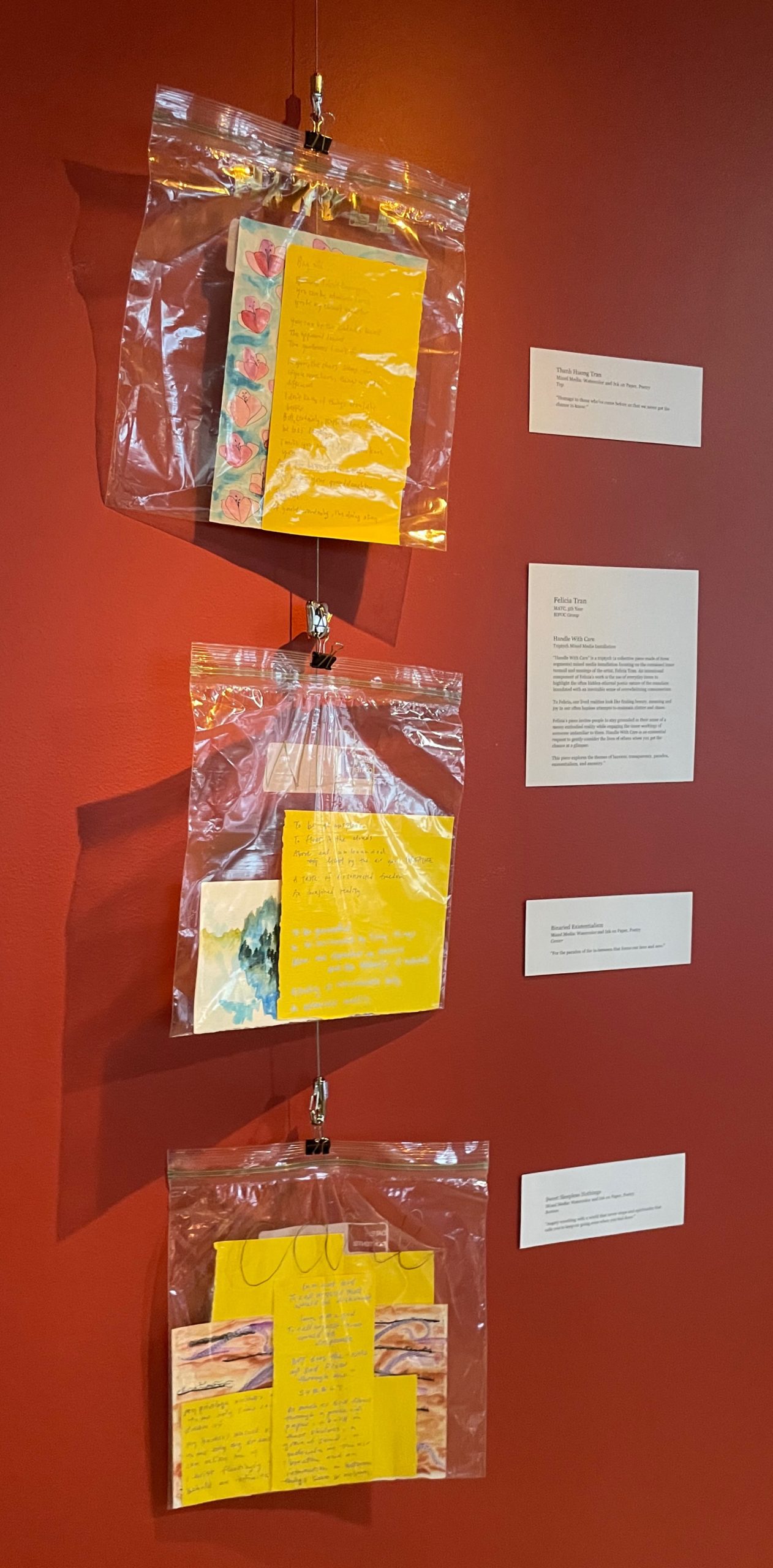
BIPOC Group
“Handle with Care”
Triptych Mixed Media Installation
From the artist’s statement: “Handle with Care is a triptych (a collective piece made of three segments) mixed media installation focusing on the contained inner turmoil and musings of the artist, Felicia Tran. An intentional component of Felicia’s work is the use of everyday items to highlight the often ethereal poetic nature of the mundane inundated with an inevitable sense of overwhelming consumerism. To Felicia, our lived realities look like finding beauty, meaning and joy in our often hapless attempts to maintain clutter and chaos.” “Thanh Huong Tran,” the first piece, engages with her family’s refugee narrative from Vietnam and her grandfather’s story, “something I’m always working with as I think about my identity”. The second piece “Binaried Existentialism,” explores the tension of in-between spaces. The third one, “Sweet Sleepless Nothings” contains watercolor and ink musings. “Felicia’s piece invites people to stay grounded in their sense of a messy embodied reality while engaging the inner workings of someone unfamiliar to them.” Through her mixed media art from everyday items including Ziploc bags, she saw her work subverting a sense of settleness: created on bus rides and transported easily.
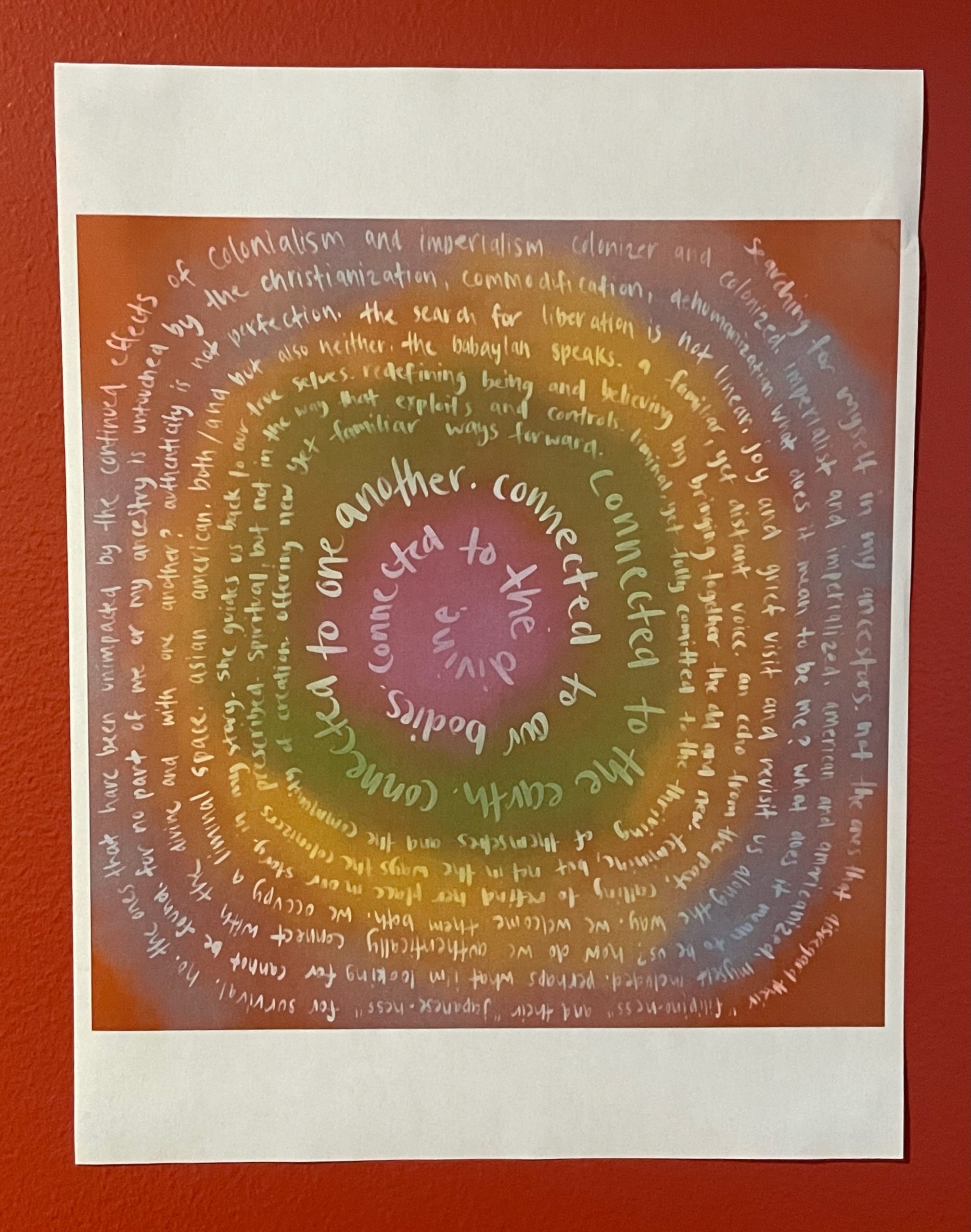 Mariko Sandico-Lee, MACP 2nd Year
Mariko Sandico-Lee, MACP 2nd Year
“Integrating the Babaylan”
Digital Print and Poem
Mariko’s vibrant digital piece, created for Dr. Parker’s Critical Social Theory class, took on a spiral shape. “As I’ve been trying to integrate the pieces society wants to fragment, being multi-ethnic, queer but straight-presenting, Japanese and Filipino…coming into the center, it’s nonlinear.” Through her work, she expressed feelings of grief, joy, and the ordinary. In Dr. Parker’s class: “It was a liberation arts piece — that was the assignment. Part of the purpose of doing it was to feel more integrated into the unsettledness… Even being here and reading it aloud to you all has felt like a continuation of that liberation arts process.”
Haley Lowe MACP, MATC 2nd year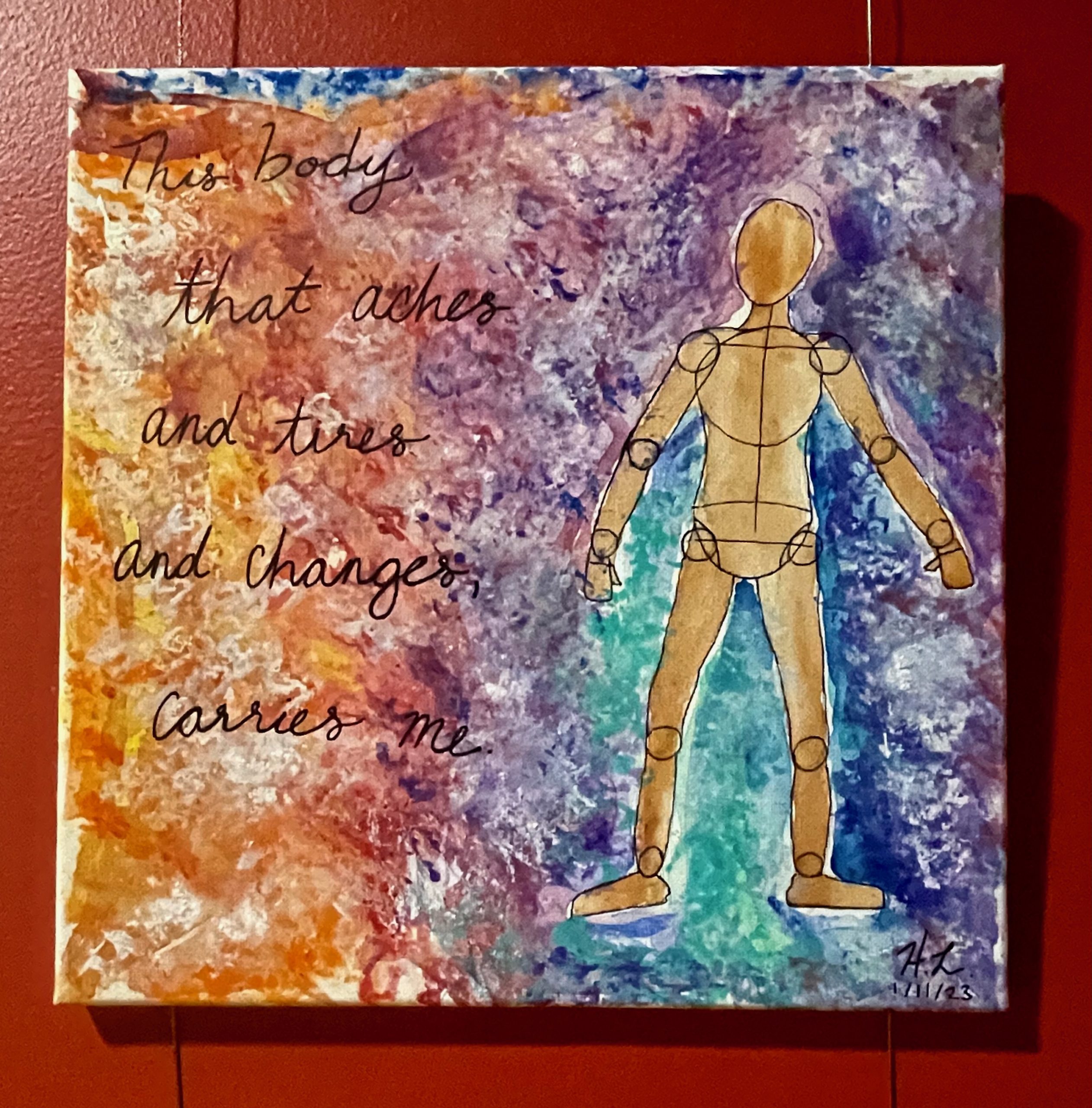
“This Body”
Watercolor and Acrylic Paint on Canvas
Haley experimented with watercolor and acrylic while exploring the complexity of identities and limitations. From the artist’s statement: “Originally I wanted to submit a piece that felt less personal. Living in the complexity of my various identities, as well as the limitations that come with chronic pain, can make for an often frustrating journey. Still, especially at this point in my life, I am making a conscious effort to love this body that has carried me to numerous places and a pandemic. My body is still being created and I am working to make room for myself. I am cultivating the beauty of this fluidity and finding joy in the process.” Questions integrated into her artistic process included: “What does it mean to see my body as good even though existing in my body can be really frustrating? How can I be gracious and kind? How do I accept change as it comes even accepting my own limitations with chronic pain? I hope to portray that kind of complicatedness.”
Chris Curia MATC, 3rd Year
LGBTQIA+ Group
“reclamations”
Poem
[excerpt]
It’s time we make amends
Me and my body
All the years I heard her cries
And demonized her desires
It’s time I tell her I’m sorry
For who I thought we had to be
And who I betrayed time and again
For what I thought it took to get there
Artist statement: “this poem offers gentle intention for how I hope to heal: grounding myself in my fleshy, lived experience. learning oneself again is a dance, a tumble, a grace, a misstep here or there – how we come home to a hope we never knew. it is my hope you meet yourself here, too.” Later, during the question and answer session, they responded to a question about the choice of pronoun for the body in the poem. “As a queer person, I’m always asking questions about how we learn to grow in our embodied experience. We throw out the playbook on how we’ve been socialized, how we’re supposed to relate to our bodies.”
After the art walk, the students answered questions from the audience and discussed their experiences of underrepresentation such as being perceived incorrectly, feeling unseen, code-switching, and passing in the dominant culture. Themes included the complexities of holding different identities, feeling settled or unsettled in contexts and spaces, learning to love questions, and navigating complex identities. Philip said, “We’ve had to understand what it means to be our identity in whatever context we’re in.” Mariko described the journey: “Joy and grief visit and revisit us along the way.”
This art show is a “living evolving gallery”: Philip and Felicia have invited any student who identifies as underrepresented to add their art to this exhibit. On the 4th floor of the building, space was converted into an art studio during residency to encourage student responses and engagement through creativity and participation in the gallery. Since the reception, more artists have joined the gallery including:
Evelyn Hemming MACP, 3rd Year
Sage
“Invincible Child…Or Maybe Not” (Poem)
April Little MATC, 1st year
Access and LGBTQIA+ Group
“Constellations” (Poem) and “They Were Wrong” (Poem)
Ann Thompson MACP, 2nd Year
“Psalm Remix: The Knees Are on Our Necks” (Poem)
The Underrepresented Student Art Gallery remains open, and will be accepting submissions through the end of Spring term. To submit a piece, fill out this submission form.

